【FOCUS】Eradicating Poverty
The major policy challenges facing the developing world are how to sustain the rapid economic growth that reduces multidimensional poverty and is both socially inclusive and environmentally sustainable. Population growth, rapid urbanization, provision of services, the need to reverse declined economic growth after the 2008 global financial crisis, and responding to the global pandemic COVID-19 are among other challenges facing the world economy.
Bangladesh
Poverty Alleviation with Microfinance
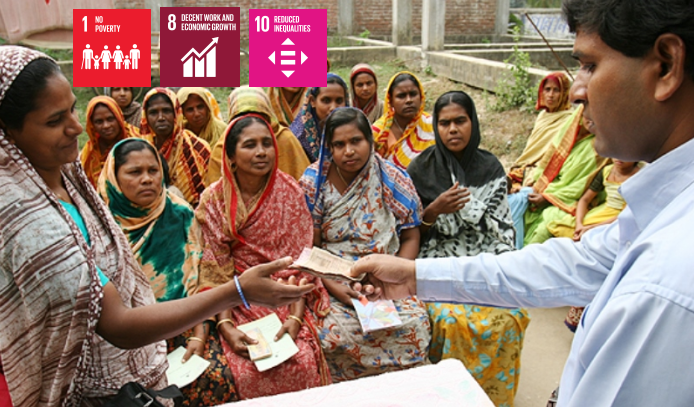
Poverty in Bangladesh has been an alarming social issue for a significant amount of time. Shortly after its independence in 1971, approximately 90% of the population lived under the poverty line. To address this issues, Bangladesh introduced the microfinance sector. Its main goal was reducing rural poverty by providing microcredit loans for non-crop activities such as trading, and raising livestock and poultry.
This was considered a innovative way to provide poor populations access to financial services. Today, Bangladesh’s microfinance institutions (MFIs) cover some 32 million members and give out more than $7.2 billion annually. The goverment has also paired MFIs with policies that aim at expanding the scope from home-based activities and self-employment , and to diversify borrowers’ economic activities, boosting incomes in the process. Moreover, this practice improved skills and marketing opportunities for the poor; lowered interest rates; encouraged more competition among MFIs.
Bangladesh has made remarkable progress in reducing poverty, supported by sustained economic growth. Based on the international poverty line of $1.90 per person per day, poverty declined from 44.2 percent in 1991 to 13.8 percent in 2016/17.
Check out to see more at:
https://www.ifpri.org/blog/how-microfinance-has-reduced-rural-poverty-bangladesh
Greater Mekong Subregion, Thailand
Pro-Poor and Sustainable Tourism in Thailand
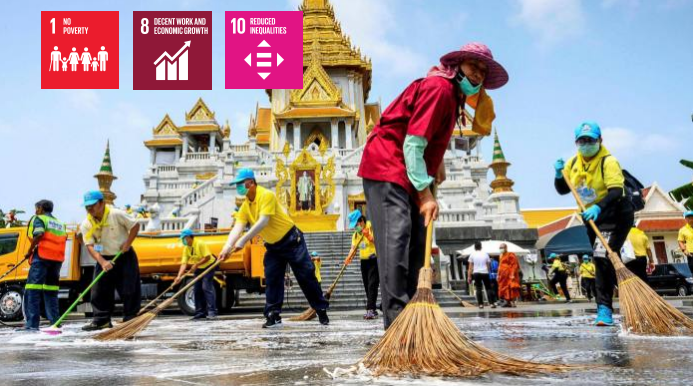
Tourists from around the world are increasingly drawn to the ‘exoticism’ of the diverse ethnic minorities in the region, which appeal to the imaginations of mainly western travellers. National governments and development donor agencies are paying close attention to the official reduction of poverty in the Mekong region.
Rather than aiming to expand the size of the tourism-related sector, PPT (Pro-Poor and Sustainable Tourism) strategies aim to unlock opportunities for the poor. One distinctive feature of PPT is that the poor can use ancestral skills such as cooking, farming, fishing, and craft production that they typically possess, to create profitable opportunities. PPT comprises tourism-related activities to bring about net benefits for the poor, increasing their overall quality of life and sense of well-being in diverse ways, including economic, social, environmental and cultural benefits.
With this approach, there has been significant progress in poverty reduction and sustainable growth in this region.
Check out to see more at:
http://etheses.lse.ac.uk/3146/1/Srisantisuk_Pro-poor_tourism_policy_in_Thailand.pdf
Mongolia
Food and Nutrition Social Welfare Program
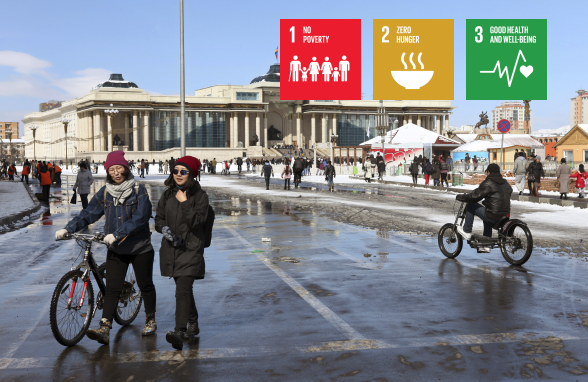
Mongolia is still considered one of the poorest countries in Asia despite rising living standards. In 2006, it had an overall poverty rate of 32.6% of the population, where about 5% were categorized as extremely poor.
To help reduce the adverse impact of the high inflation, the government established a food subsidy program targeted to the poor. Vulnerable and poor households had improved access to food through a targeted food stamp program and strengthened social welfare systems. The program ensured strategies to minimize food stamps being distributed to
ineligible beneficiaries. In addition, The project provided them with valuable skills such as backyard gardening, greenhouse construction and maintenance, and food storage and preservation.
The food stamps supported the consumption of basic foods by extremely poor households or among the poorest 5% of Mongolian households. The food stamps ensured the poor households to have adequate food and diverse diets, reduced financial reliance on others and on credit, and favorable self-assessment of households’ living standards.
Check out to see more at:
Philippines
Social Protection Support Project
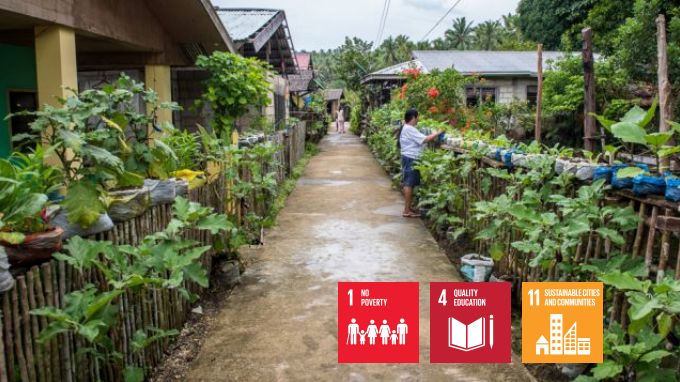
Poverty incidence in the Philippines was fairly high at 26.6% in 2006. Key causes of poverty included high inequality and chronic underinvestment in physical and human capital, especially health and education.
To respond to these challenges, the Government of the Philippines launched the Pantawid
Pamilyang Pilipino Program (4Ps) conditional cash transfer (CCT) program in 2008. In addition to providing cash grants, family development sessions (FDS) and youth development sessions (YDS) are conducted to build social safety nets. So households can develop coping mechanisms to achieve better working condition, nutrition, and education and care for the children.
Almost all beneficiaries (90%) complied with the health and education conditions for the cash transfer, resulting in improvement in health and education. This nationwide program covered 17 regions, 80 provinces, 145 cities, 1,482 municipalities, and around 42,000 barangays in all.
Check out to see more at:
Nepal
Strengthening Public Management Program
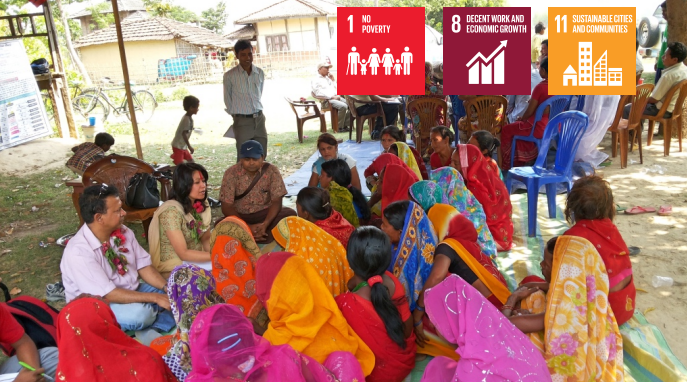
In Nepal, persistent inequality in access to public services, development opportunities, and social arrangements had restricted the influence and prospects of a large proportion of women, the poor and disadvantaged groups.
The Government of Nepal, in consultation with its development partners, designed and introduced the Local Governance and Community Development Program (LGCDP) as a flagship program in 2008 with an overriding goal of social and economic transformation. Under the Strengthening Public Management Program, The SPMP focused on improving different aspects of governance-related challenges, primarily at the local governments; engaging communities in local governance so that their development needs are addressed, and they could hold government accountable; and improving the livelihoods of people through small community-based livelihood and infrastructure grants and skills training.
By fiscal year 2017, 1,214,599 citizens (740,998 men and 473,601 women) were actively engaged in local development planning and governance activities. Citizen empowerment with community forums strengthened public accountability in the absence of elected officials.
Check out to see more at:


 In Focus | World Cities Day: People-Centred Smart Cities
In Focus | World Cities Day: People-Centred Smart Cities City Stories | Fostering community resilience: A lifeline for the Central African Republic
City Stories | Fostering community resilience: A lifeline for the Central African Republic In Focus | Innovative Education, Empowering Futures
In Focus | Innovative Education, Empowering Futures




















 Tel: +86 020 3780 4434
Tel: +86 020 3780 4434 Email: info@guangzhouaward.org
Email: info@guangzhouaward.org Adress: Unit 01-7, 28th Floor, No. 7, Chunrong 3rd Road, Tianhe District, Guangzhou, Guangdong, 510000, PRC
Adress: Unit 01-7, 28th Floor, No. 7, Chunrong 3rd Road, Tianhe District, Guangzhou, Guangdong, 510000, PRC




